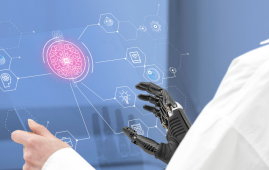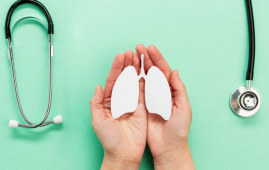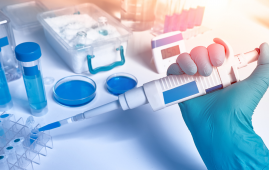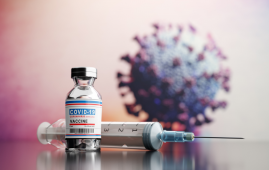Although others view technology as a burden, it is a luxury that makes everyone’s lives much easier. There is a reason why the Industrial Revolution is studied in about every American history class. It symbolizes how the introduction to technology transformed the lives of many Americans, inside and outside of the home.
Technology continues to improve occupations nationwide by making workers’ jobs easier and more manageable. One career that everyone can agree on has significantly benefited from constant improvements in technology in the healthcare field.
Impact of technology in healthcare industry
Technological advancements have improved the healthcare field in a variety of ways. Innovations in bioengineering have given rise to new treatment methods like immunotherapy, and tech solutions like electronic health record systems have helped healthcare professionals better maintain accurate patient records. Through electronic health records, healthcare workers can manage a patient’s medical history, lab results, and additional patient health data.
With the ability to access this information in any hospital database, healthcare workers can quickly transfer any data about any patient’s condition. Before electronic health records were introduced to hospitals, medical professionals constantly experienced issues with accurately moving patients’ records to and from healthcare centers. The addition of electronic health records allows healthcare workers to provide a more efficient standard of care to their patients.
How has telehealth improved the healthcare field?
Telehealth is the method where healthcare is advanced through the use of telecommunications. The coronavirus pandemic alone has led to an increase in telehealth for most, if not all, patients. Telehealth has allowed patients to maintain communication with their healthcare providers through text, email, or webinars.
Patients can not only remain in contact with their healthcare providers but also ask questions regarding their health at any moment, schedule appointments, and even meet with their doctors remotely for appointments. Still, they can do so without putting themselves, healthcare providers, or other people at risk of contracting the virus.
Telehealth is also beneficial in reducing transportation costs for patients who may not be able to afford to travel to healthcare centers. Because patients have had issues in the past with traveling to healthcare centers, telehealth is an excellent way of receiving healthcare most conveniently for both patients and healthcare providers. Patients can meet with their physicians virtually at any time and do not have to be financially inconvenienced to do so.
How has wearable technology improved the healthcare field for patients?
Wearable technology is a medical device that collects patient data that helps physicians and patients monitor and assess the patient’s health. Wearable technology has made it easier and more fun for patients to track their vitals. Sleep patterns, heart rates, and exercise routines are just some medical data that wearable technology can track. Tracking vitals also invites patients to share their medical information with their healthcare providers. Wearable technology helps patients with disabilities manage their daily lives without any outside assistance. Some wearable technology allows patients to manage conditions such as heart disease, diabetes, and even sleep apnea on their own.
Wearable technology includes the following items:
- Smart jewelry (watches, wristbands, and pins)
- Fitness trackers
- Sensors that mount to your body
- AI hearing aids
- Augmented reality headsets
Patients who use wearable technology items to monitor their health can make it easier to prevent serious problems such as obesity, high blood pressure, issues with their heart rate, and more because they are constantly monitoring all of the above.
How has cybersecurity become a growing concern in healthcare?
One area where technology is continuing to improve regarding healthcare is cybersecurity. When people consider institutions at risk of falling prey to a cyberattack, banks and government facilities probably come to mind. Rarely will people think that hospitals are the leading institutions at risk of succumbing to cyberattacks, yet they are?
The pandemic triggered a spike in the number of cyberattacks on hospitals. Because hospitals need immediate access to a patient’s information and other digital tools to perform operations, they fall victim to ransomware attacks.
What are some of the dangerous consequences of cyberattacks on healthcare facilities?
Some of the dangerous consequences of cyberattacks on healthcare facilities involve a threat to patient safety, delayed patient treatment, and the potential exposure of a patient’s personal medical information. Patients are at risk of having necessary treatments delayed because healthcare providers cannot access their records.
Patients are also at risk of having their medical history, credit card information, bank account information stolen and distributed on the dark web. To prevent the increase of cyberattacks in the future, healthcare providers and cybersecurity experts are collaborating to design strategies on how to incorporate cybersecurity into their new technology.
What are some cybersecurity techniques that are currently being used to protect patients’ private information?
Some cybersecurity techniques used to protect patient information involve encryption, software updates, and security solutions. Because of the excessive cyberattack attempts on hospitals, cybersecurity experts recommend extreme security measures to protect patients’ medical data.
Cybersecurity experts recommend the use of encryptions to protect all patient data. All healthcare organizations are installing antivirus and antimalware on all computing devices. Cybersecurity experts also recommend firewall installation and advanced solutions to stop advanced cyberattacks from happening.
Healthcare records contain the most sensitive of data; Social Security numbers, names, health insurance policy numbers, diagnosis information, blood type, and other health records. Protecting this information should be the top priority of every healthcare company, doctor’s office, or medical facility — and unfortunately, because of the prevalence and advanced nature of these attacks, investment in a cybersecurity response plan is essential. While you may not be able to stop every attack from occurring, you can respond quickly and adeptly to any breach, as long as you are prepared.
Technology plays multiple roles in healthcare safety
From wearable technology to cybersecurity, technology plays multiple roles in promoting safety in the healthcare industry. With the ability to access your medical records from any device with an internet connection, or to remotely meet with your doctor, you will want assurance that your information and data are secure at all times.











Leave a Comment